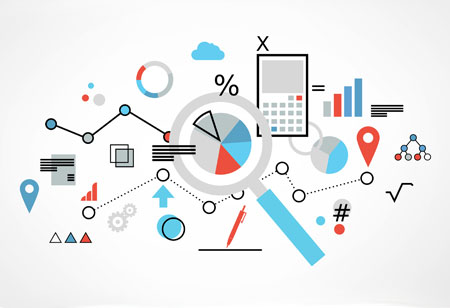THANK YOU FOR SUBSCRIBING
Requisites for big data analytics tools
Big data analytics can involve a gamut of the process such as business management, developers, data scientists, as well as production teams and creating a new data analytics model is just a part of this process. Following are some of the features...

By
Apac CIOOutlook | Thursday, January 01, 1970
Stay ahead of the industry with exclusive feature stories on the top companies, expert insights and the latest news delivered straight to your inbox. Subscribe today.
A complex process, big data analytics can involve a gamut of the process such as business management, developers, data scientists, as well as production teams and creating a new data analytics model is just a part of this process. Following are some of the features of big data analytics tools that can help data scientists improve business results through minimal effort.
Big data analytics achieve value when the insights acquired from data models can help support decisions made while utilizing other applications. The ability to create insights in a format that is easily embeddable into a decision-making platform should be a part of these features. The platform should be able to apply these insights in real time to make in-the-moment decisions.
A great deal of time is spent by data scientists in cleaning, labeling, and organizing data for data analytics, involving seamless integration across applications and Application Program Interface (APIs), disparate data sources and types, cleansing data, and providing granular, role-based as well as secure access to the data. Therefore, the full spectrum of data types, protocols, and integration scenarios must be supported by the big data analytics tools in order to speed up and simplify these data wrangling methods.
Check this out: 20 Most Promising Data Analytics Solution Providers - 2018
An ad hoc discovery and exploration of the underlying data are the integral elements of data analytics and this helps organizations understand the problem from a business context and formulate better analytic questions. The features that can help streamline this process, results in effort reduction in testing new hypotheses about the data, which would help to weed out bad ones faster, hence streamlining the discovery of useful connections buried in the data.
Data analytics can be utilized in a wide variety of approaches that includes business intelligence, predictive analytics, machine learning, and real-time analytics wherein each approach provides a different kind of value to the business. The apt big data analytics tool should be flexible and functional enough to support the different use cases with minimal effort.
Having the luxury of time, data scientists typically develop and test different data models on small datasets for long duration. However, the resulting analytics models need to be run economically and most often deliver results quickly, which require that these models support high levels of scale for taking in data and working with large data sets without exorbitant cloud service or hardware costs.
While training and modeling their solution in an iterative fashion, unified analytics tools aid enterprises in building data pipelines across a multitude of siloed data storage systems.
Check This Out:- Top Data Analytics Consulting/Services Companies
Top Data Analytics Solution Companies
Top Big Data Consulting/Services Companies
Top Big Data Solution Companies
Defense Technology Solution Providers | CIOReview





